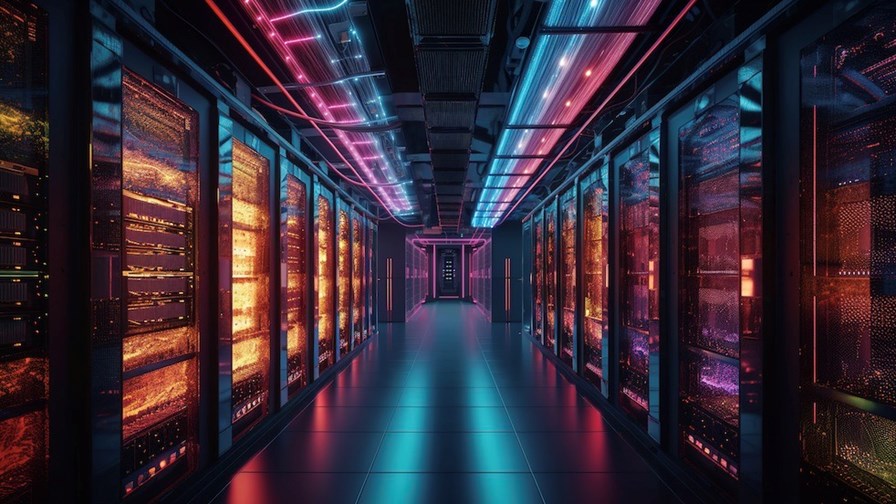
- Research firm IDC predicts that datacentre electricity consumption worldwide will more than double between 2023 and 2028, reaching 857 terawatt hours.
- Increasingly power-hungry AI workloads are a major factor
- Rising electricity prices and growing carbon emissions add an urgency for datacentre efficiencies to be increased and greener energy sourced
- AWS, Equinix, Google, Microsoft are among those keeping the nuclear option alive
Datacentre electricity consumption is going to skyrocket. According to a new report from research firm IDC, it will more than double between 2023 and 2028, notching up a compound annual growth rate (CAGR) of 19.5% over the five-year period.
In 2028, calculates IDC, global datacentre electricity consumption will reach 857 terawatt hours (TWh). By way of comparison and to help illustrate the enormity of that figure, the UK’s entire electricity consumption was 266 TWh in 2023.
Power-hungry AI workloads will account for a growing portion of total datacentre electricity use. IDC forecasts they will gobble up 146.2 TWh by 2027 (a CAGR of 44.7%).
As it stands, electricity is the largest ongoing expense in keeping datacentres humming: It accounts for 46% of total spending for enterprise datacentres, and 60% for service provider datacentres. “Rising consumption and increased energy costs will make datacentres considerably more expensive to operate,” warned the research firm, “but how much is uncertain.” Burgeoning carbon emissions is of course another major concern.
All of this adds an urgency to finding more efficient ways to run datacentres and source greener fuels. There’s a lot of financial incentive to do so, says IDC, plus there’s the added carrot of making sustainability goals more achievable. The report suggests that an additional 10% in energy efficiency can offer datacentre operators “considerable savings”.
“There are any number of options to increase datacentre efficiency, ranging from technological solutions like improved chip efficiency and liquid cooling to rethinking datacentre design and power distribution methods,” said IDC research director Sean Graham, who specialises in datacentre trends.
“But providing energy-efficient solutions is only part of the equation for meeting customer needs. Datacentre providers, including cloud and colocation services, should continue to prioritise investment in renewable energy sources. By investing in renewables, they are helping to increase overall supply while helping their customers meet their sustainability goals,” he added.
Graham is an advocate of solar and wind power, not only for offering significant environmental advantages but also, in his opinion, providing the lowest levelised cost of electricity over a generator’s lifetime. He advises datacentre operators to collocate their facilities at or near the source of renewable energy generation, which can reduce both construction costs and energy losses associated with distribution, as well as bolstering resiliency by removing grid reliability issues.
Nuclear option anybody?
Solar and wind power may not be enough. In a recent speech by Google CEO Sundar Pichai at Carnegie Mellon University, as reported by Power Magazine, he confirmed that the company was exploring the possibility of using small modular reactors (SMRs) to supply the electricity needs of datacentres with a power capacity of one gigawatt.
Given the need to develop extra datacentre capacity to cope with AI workloads, Pichai apparently said it would be a challenge for Google to meet its goal of becoming a carbon-neutral company by 2030, although he did not concede defeat altogether. It was not clear if Google would use SMRs for its own datacentres.
Other datacentre behemoths looking into the nuclear option include Amazon Web Services (AWS), Equinix and Microsoft. Earlier this year, AWS purchased a 960-megawatt datacentre campus from Talen Energy in Pennsylvania for $650m, which is located next to a Talen nuclear power plant subsidiary.
“To supplement our wind and solar energy projects, which depend on weather conditions to generate energy, we’re also exploring new innovations and technologies and investing in other sources of clean, carbon-free energy,” said an AWS spokesperson at the time. “This agreement with Talen Energy for carbon-free energy is one project in that effort.”
AWS’s hook-up with Talen has hit a bump, however, with utilities Exelon and American Electric Power (AEP) filing objections to the deal with the Federal Energy Regulatory Commission on the grounds that it could raise power bills for consumers.
In April 2024, as reported by Datacenter Dynamics, Equinix signed a deal to procure up to 500MW of nuclear power from Oklo reactors. It followed a letter of intent signed in February for Equinix to purchase power from Oklo’s planned ‘powerhouses’ (nuclear reactors) to serve its US datacentres over a 20-year period.
More experimentally, Microsoft is apparently working with a company called Helion to test prototype fusion in a magnetised vacuum chamber and then transmute that energy onwards as a practically useful form of green power. The initial goal is to extract more power than it takes to cause the reaction in the first place.
- Ken Wieland, Contributing Editor, TelecomTV
Email Newsletters
Sign up to receive TelecomTV's top news and videos, plus exclusive subscriber-only content direct to your inbox.




